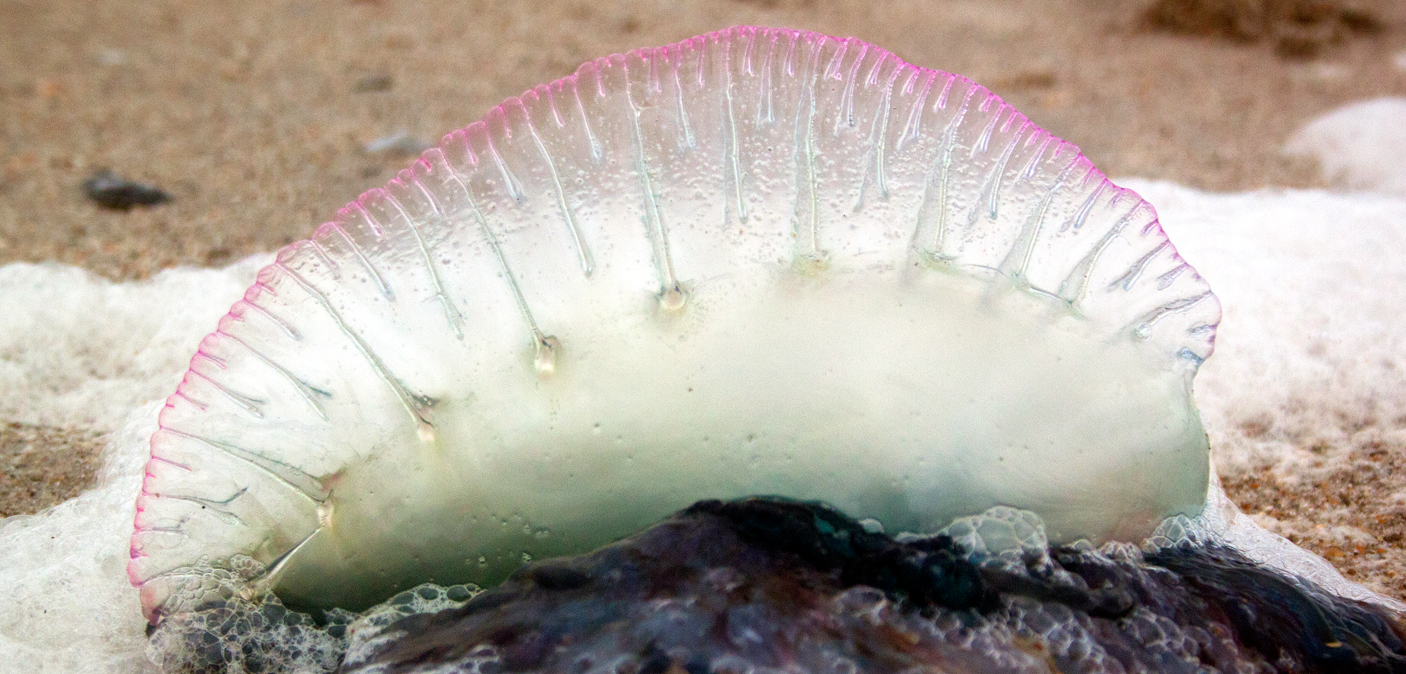The Portuguese man o’ war has made an appearance at Wrightsville Beach and shorelines as far south as Bald Head Island.
Dr. Joseph Pawlik of the University of North Carolina Wilmington’s Department of Biology and Marine Biology speculates the wind may have driven them onshore last weekend.
“The interesting thing about them in particular is that their sails are oriented either left handed or right handed and that means when the wind blows on them the population splits. Half go kind of in one direction and half go in the other. That tends to distribute them more broadly; so if some are washing up on shore, an equal number are going out to sea; so, clever mechanism for making sure the population is not all blown onto the shore,” Pawlik said.
A marine biologist and invertebrate specialist, Pawlik said the jellyfish live on the ocean’s surface and the species is not widely studied because it lives so far away. The study is dependent on chance, Pawlik said. Prevailing winds, sea water temperatures, food supply, reproduction trends and population density are all factors determining the incidence of their appearance this time of year.
Pawlik himself observed mature specimens on Bald Head Island beaches Sunday, April 19.
“Usually you’re seeing younger individuals within the population. The interesting thing is they tend to be small in the spring and get bigger over the course of the summer. And here we’re already seeing individuals that look full size and basically just getting out of winter. That’s weird, and I don’t ever remember that happening before,” Pawlik said. “The great thing about them is that you can see them on the surface. The unfortunate thing is that they have very long tentacles and they are particularly potent when they’re out at sea.”
The species is more dangerous to surfers.
“If they get those tentacles wrapped around their legs they can go into shock and drown,” Pawlik said.
Once the invertebrates have been rolled around in the surf several times, he said, “That defangs them to a considerable extent. They have much less punch at that point. But having said that, they still pack quite a wallop and people who touch them are likely to get stung.”
The float is touchable, Pawlik said, but the bright blue tentacles are off limits. To be rid of them, he said, pop the balloon and bury them in the sand. But cautioned, “Any manipulation comes at some risk.”
Coiled along the long line of tentacles are the stinging cells, Pawlik said. Those tentacles seldom detach from the man o’ war’s body. Pawlik advised against walking through the swash zone where the venomous fish can be moving very quickly.
People who are walking through the surf or small children playing in the surf are at risk of having the tentacles wrap around their ankles or other limbs.
Dr. Peter Kramer of Wrightsville Beach Family Medicine compared the Portuguese man o’ war sting to a bee sting.
“You know some people get stung by a bee and have a terrible reaction and some people get stung and don’t have any reaction. You never know how you’re going to react but sometimes that significant reaction can be life threatening,” Kramer said.
He suggested:
Avoid interaction with the species either floating on the surface of the water or beached on the sand.
Seek first aid immediately because everyone reacts differently.
Don’t use your hand to remove the stinging tentacles. Do not dump sand on the wound.
The more contact with the skin, the worse the wound will be.
Use a stick, a credit card or put your hand in a plastic bag to remove the tentacles.
Wash skin with diluted vinegar or sea water but monitor yourself or the victim for sudden respiratory changes.
Watch for shortness of breath, wheezing and/or swelling reactions to venom.
“The venom can systemically affect your whole body,” Kramer said. “Generally if people get stung by a man o’ war and people are going to react, it’s not going to be a day or two later. It’s going to happen very quickly.”
Kramer said in addition to respiratory issues, the victim could suffer chest pains, muscle pains and spasms in the area of the injury.
email [email protected]




